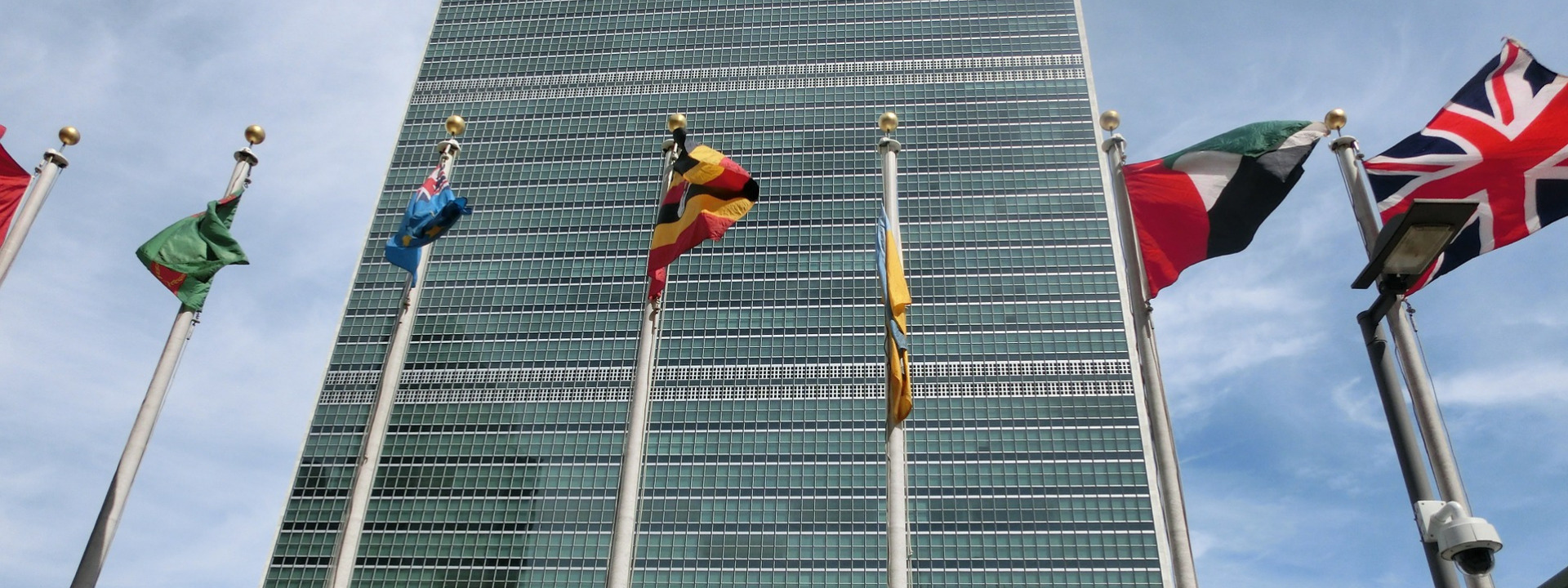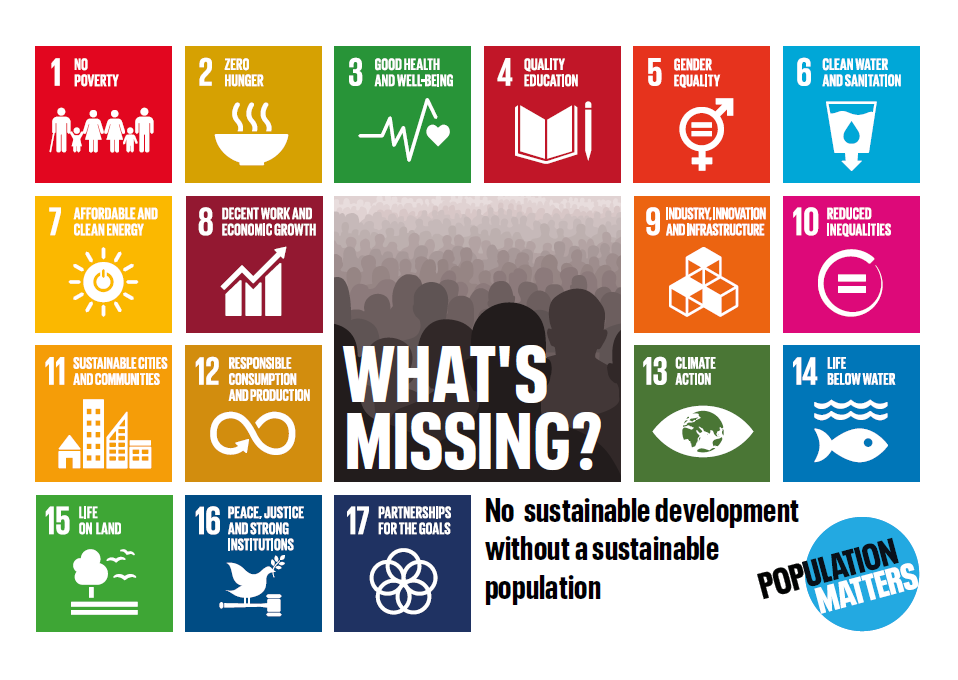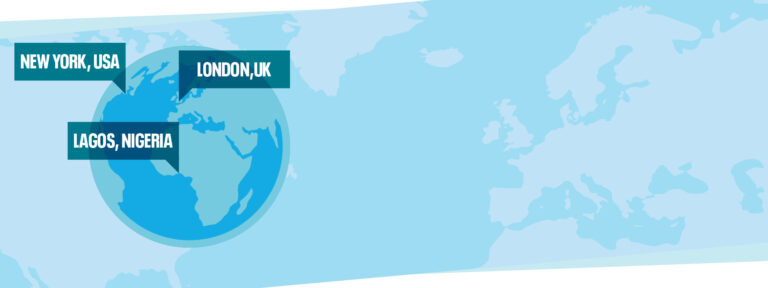
The World and the UN Must Reduce Population Growth
The United Nations’ 17 Sustainable Development Goals imply that there is no longer any need to reduce global population growth, even though it is a serious problem that undermines most of the SDG targets. By adding a further SDG aimed at slowing the increase in population, the world could yet save the UN’s 2030 Agenda.
This commentary, co-written by Population Matters Director Robin Maynard and Frank Götmark of The Overpopulation Project, was originally published on 10 September 2019 by Project Syndicate and is replicated here with their permission.
On September 24-25, world leaders will gather at the United Nations in New York to review progress toward the UN’s 2030 Agenda and its 17 Sustainable Development Goals. The SDGs, which aim “to end poverty, protect the planet, and ensure prosperity for all,” are commendable, and summarize the kind of world many of us wish to see in 2030. But if this vision is to have any chance of materializing, governments must now add an 18th goal: “Dampen population growth.”
The challenges that humanity faces today stem mainly from overconsumption and overpopulation. Yet policymakers often fail to consider the two factors together, and largely neglect population growth in particular.
The overall human impact on the global environment is the product of population size and average per capita consumption. The UN’s Intergovernmental Panel on Climate Change has concluded that population growth and economic (consumption) growth are the two main causes of global warming. Per capita resource consumption and greenhouse-gas emissions are highest in developed economies, while rapid population growth in developing countries contributes to the loss of forests and biodiversity.
When governments adopted the SDGs in 2015, many experts were surprised by the lack of attention to population growth. Demographer Joseph Chamie, a former director of the UN Population Division, expressed concern that the UN was ignoring the issue. University of Cambridge economist Partha Dasgupta and co-authors concurred, arguing that this omission “should be a point of public concern.” More recently, demographer Massimo Livi Bacci of the University of Florence wrote that “population … has become irrelevant for the sustainability of development, notwithstanding the evidence to the contrary.”
Between 1960 and 2000, the world’s population doubled from three billion to six billion. This growth contributed to greater pollution of land, lakes, rivers, and oceans, as well as urban overcrowding and a higher demand for agricultural land and freshwater (in turn encroaching on natural ecosystems). Despite significant technical advances in agriculture, famines killed millions of people over this 40-year period. And in developing countries, rapid population growth left poor people at greater risk of death, injury, and disease resulting from pollution, floods, droughts, and other disasters.
There are now 7.7 billion people on Earth. The UN forecasts that this figure will rise to 11 billion by 2100 (and that assumes steady fertility declines in many countries that have tended to resist this trend). A population increase on this scale would create more pollution, require a doubling of global food production under difficult conditions (including climate disruption), and result in more people suffering during conflicts and famines.
To be sure, there has been plenty of necessary research into how the world can better accommodate billions more people, in terms of pollution, agriculture, energy efficiency, and climate change. But such research fails to quantify the benefits of minimizing further population increases – a critical oversight.
While many researchers and policymakers seem to regard a rapidly increasing global population as inevitable, ordinary citizens recognize the serious problems and risks that this will cause. In a 2014 survey by the Global Challenges Foundation, a majority of 9,000 respondents in nine countries (the United States, Brazil, South Africa, Germany, Poland, Sweden, India, Russia, and China) considered population increase to be an actual or potential future threat to mankind. The same year, a Pew Research Center survey reported that 82% of American scientists regarded the growing world population as a major problem because “there won’t be enough food and resources.”
Yet the huge projected increase in the world’s population this century is avoidable. The size of the population in 2100 can be influenced now by international debate, government programs, and individual choices.
More specifically, an additional SDG to dampen population growth would promote funding for voluntary, rights-based family planning. This approach has a proven track record of success, not only in reducing births rapidly, but also in advancing the empowerment of women and spurring economic progress. No coercive “population control” measures are needed. Rather, wider awareness of the linkage between family size and ecological sustainability can help parents recognize the benefits of having fewer children.
Clearly, population growth cannot be stopped overnight, nor feasibly by 2030. But we could establish trends toward a population peak and decline in all countries by then. This includes not only developing countries, where population growth threatens security, but also rich countries with large ecological footprints, where population decline and its benefits are resisted because of ill-founded fears of demographic aging.
Reproductive rights and family planning are mentioned in both SDG 3 (good health and wellbeing) and SDG 5 (gender equality), but neither goal explicitly aims to reduce population growth. As they currently stand, the SDGs imply that there is no longer any need to curb the global population increase, even though it undermines most of the goals.
As a result, there is a big risk that the world will achieve little of the 2030 Agenda, especially in countries where high birth rates persist. But we should not give up. Changes in population policies and norms can reduce birth rates. And by adopting a new SDG to this effect, the world could yet save the 2030 Agenda.
In addition to Frank Götmark and Robin Maynard, this commentary has been signed by:
Damayanti Buchori, Professor, Bogor Agricultural University (IPB), Indonesia
Philip Cafaro, Professor, Colorado State University, United States
Gerardo Ceballos, Professor, Instituto de Ecología, Mexico
Richard Cowling, Professor, Nelson Mandela University, South Africa
Edu Effiom, Assistant Director Forestry, Cross River State Forestry Commission, and Chair of the Africa Chapter, Association of Tropical Biology & Conservation, Nigeria
Peter Matanle, Senior Lecturer, University of Sheffield, United Kingdom
Charles Ochieng, practitioner in reproductive health, Kenya
Jane O’Sullivan, Honorary Senior Research Fellow, University of Queensland, Australia
Luis F. Pacheco, Professor, Universidad Mayor de San Andrés, Bolivia
Aalok Ranjan Chaurasia, Demographer, Shyam Institute, India
Alon Tal, Professor, Tel Aviv University, Israel
Lucia Tamburino, PhD and postdoctoral researcher, Italy and Sweden
Luciano Martins Verdade, Associate Professor, Universidade de São Paulo, Brazil
© Project Syndicate – 2019
Take Action

Call on UN Secretary-General António Guterres to speak out on population and develop a strategy that empowers and encourages people to choose smaller families.



